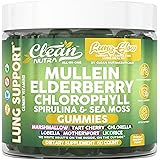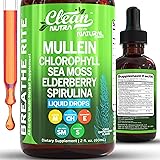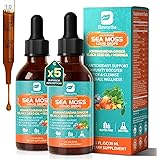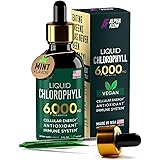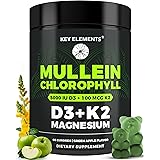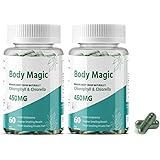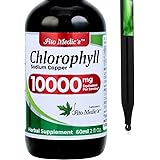The foundational step in overcoming drug or alcohol addiction is frequently recognized as medical detoxification, a process that ensures safety and stability during a challenging period. This phase is not merely about ceasing substance use; rather, it represents a professionally supervised journey where the body is gently assisted in expelling toxic substances.
Understanding the intricacies of medical detox, as highlighted in the accompanying video, is paramount for anyone navigating the complexities of substance use disorder. Medical detoxification is expertly designed to mitigate the severe and often life-threatening withdrawal symptoms that can manifest when physical dependence has developed. Without proper clinical oversight, the withdrawal process for certain substances can pose significant health risks, underscoring the necessity of a structured, medically managed environment.
Understanding Physical Dependence and the Necessity of Supervised Detox
Physical dependence on drugs or alcohol is characterized by the body’s physiological adaptation to the continuous presence of a substance. This adaptation, often termed neuroadaptation, means that the central nervous system adjusts its normal functioning to accommodate the substance’s effects. Consequently, when the substance is removed, the body experiences a profound shock, manifesting as withdrawal symptoms. Imagine if a complex machine, accustomed to a specific fuel, were suddenly denied it; the resulting malfunction would be severe and unpredictable.
The severity of withdrawal symptoms is directly correlated with the type of substance consumed, the duration of use, and the typical quantities ingested. Individuals exhibiting persistent cravings, an inability to cease use despite intentions, or a need for increasing amounts to achieve the desired effect are strong candidates for physical dependence. While anxiety, depression, insomnia, and sweating are common manifestations, more severe symptoms can include increased heart rate, intense nausea and vomiting, visual or auditory hallucinations, and even life-threatening seizures. Such a spectrum of symptoms clearly necessitates professional medical intervention.
Substance-Specific Protocols in Medical Detoxification
The specific substance from which an individual is detoxifying significantly influences the approach and intensity of the medical detox protocol. Different substances induce distinct physiological adaptations and, therefore, elicit unique withdrawal profiles. This specialized understanding is crucial for effective and safe treatment.
Addressing Alcohol and Benzodiazepine Withdrawal
Withdrawal from alcohol and benzodiazepines (such as Xanax, Klonopin, or Valium) is particularly hazardous due to their depressant effects on the central nervous system. During withdrawal, this suppression is abruptly lifted, leading to an overactive state of neuronal excitability. This hyperexcitability can precipitate severe complications, including delirium tremens (DTs) in alcohol withdrawal, which involves confusion, rapid heart rate, high blood pressure, and profound hallucinations. Similarly, benzodiazepine withdrawal can trigger persistent anxiety, panic attacks, and, critically, grand mal seizures, which can be fatal if not medically managed. Conversely, under a medical detox regimen, medications are administered to gradually stabilize the patient’s nervous system, preventing these extreme reactions and ensuring a controlled reduction in physiological distress.
Managing Opioid and Synthetic Drug Detoxification
Opioids, including prescription painkillers like oxycodone and illicit drugs like heroin, bind to opioid receptors in the brain, altering pain perception and inducing euphoria. Withdrawal from opioids, while rarely life-threatening directly, is intensely uncomfortable and often leads to relapse due to the sheer physical and psychological distress. Symptoms such as severe muscle aches, diarrhea, vomiting, and profound dysphoria are typical. Synthetic drugs, which encompass substances like kratom and bath salts, present an additional challenge due to their variable chemical compositions and unpredictable effects on the brain and body. The withdrawal profiles for these substances can be erratic, sometimes mimicking opioid withdrawal, other times causing severe psychosis or cardiovascular issues. A supervised medical detox is indispensable here, allowing for precise medication management to alleviate symptoms and ensure physical safety.
The Comprehensive Assessment: Foundation of an Individualized Treatment Plan
Upon admission to a medical detox facility, patients undergo a thorough and multi-faceted evaluation by clinical staff. This comprehensive assessment is not merely a formality; rather, it forms the bedrock upon which a safe and effective individualized treatment plan is constructed. The detailed screening process is designed to capture a complete picture of the patient’s health status, enabling clinicians to anticipate potential complications and tailor interventions precisely.
During these evaluations, various critical aspects are assessed, including the specific substance use disorders present, the duration and intensity of use, and the patient’s past medical history. Furthermore, potential co-occurring mental health disorders, such as anxiety, depression, or PTSD, are meticulously screened for, as these often complicate recovery and require integrated treatment. Medical conditions, which could be exacerbated by withdrawal, are also identified, ensuring that all physical health concerns are addressed. The severity of current withdrawal symptoms is continuously monitored, allowing for immediate adjustments to the treatment protocol. This holistic screening process ensures that all facets of a patient’s well-being are considered, laying the groundwork for a truly customized addiction treatment strategy.
Pharmacological Interventions: Easing the Withdrawal Journey
A cornerstone of medical detoxification involves the strategic use of pharmacotherapy to manage withdrawal symptoms and reduce cravings. These addiction medications are carefully selected and administered by medical professionals to ensure patient comfort and safety, thereby significantly increasing the likelihood of successful detox completion. Imagine enduring severe physical distress without any relief; such an ordeal could easily deter an individual from continuing treatment.
For alcohol withdrawal, medications such as Vivitrol (naltrexone) may be utilized not only for craving reduction but also as part of a broader pharmacotherapeutic strategy to stabilize the patient. Benzodiazepines, administered cautiously and tapered down, are often employed to prevent seizures and manage agitation during acute alcohol withdrawal. Conversely, for opioid withdrawal, a distinct set of medications is often prescribed. Suboxone (buprenorphine/naloxone) and Sublocade (injectable buprenorphine) are commonly used to alleviate withdrawal symptoms and suppress opioid cravings by acting on the brain’s opioid receptors. Methadone, another opioid agonist, is also frequently employed in a controlled environment to manage withdrawal, providing a stable alternative while the body re-calibrates. Naltrexone can be administered post-detoxification to block opioid effects and reduce cravings, preventing relapse. These pharmacological tools are meticulously integrated into the patient’s treatment plan, ensuring a less traumatic and more manageable detox experience.
Key Determinants of Detoxification Duration and Intensity
The length and intensity of a patient’s medical detox journey are not uniform; instead, they are governed by a complex interplay of individual and substance-related factors. While the video indicates that most medical detoxifications typically span five to seven days, this timeframe represents an average. The actual duration can vary considerably, necessitating a flexible and responsive clinical approach.
Primary factors influencing the detox timeline include the specific type of substance used, as different drugs have varying half-lives and withdrawal durations. The length of time a substance has been habitually consumed also plays a significant role; chronic, prolonged use often leads to more entrenched physical dependence and, consequently, a longer withdrawal period. Furthermore, the average amount of a substance used impacts the body’s physiological adaptation and the intensity of the ensuing withdrawal. Beyond these substance-specific elements, individual patient factors such as body chemistry, metabolic rate, weight, and the presence of any co-occurring medical conditions can significantly modulate the detox process. A patient’s unique physiological makeup necessitates a personalized approach, ensuring that detox protocols are adapted to their specific needs and responses.
Essential Qualities of a Reputable Medical Detox Facility
When selecting a medical detox facility, meticulous consideration of certain crucial attributes is advised to ensure optimal care and safety. The environment chosen for detoxification can profoundly impact the efficacy of the initial recovery phase. A patient’s well-being during such a vulnerable period is contingent upon the facility’s adherence to professional standards and its capacity to provide comprehensive support.
Primarily, an accredited and fully licensed facility should be sought. Such designations signify that the facility meets stringent operational, safety, and clinical benchmarks established by regulatory bodies. This accreditation offers assurance regarding the quality of care provided. Furthermore, the presence of an experienced and licensed medical staff is non-negotiable. This team, comprising physicians, nurses, and other specialists, must possess the expertise to manage acute medical needs, administer medications, and address any emergent complications that may arise during withdrawal. Finally, uninterrupted, 24-hour access to treatment and medical oversight is imperative. This continuous availability ensures that patients are constantly monitored and that immediate interventions can be implemented if their condition changes. In contrast, facilities lacking these critical components may compromise patient safety and the overall effectiveness of the detox process.
The Critical Transition to a Continuum of Care
Medical detoxification, though an essential initial step, is rarely sufficient as a standalone solution for sustained recovery from substance use disorder. A seamless transition into a comprehensive continuum of care is paramount for addressing the underlying psychological and behavioral aspects of addiction. The insights gained during detox about an individual’s unique needs inform the subsequent phases of treatment.
Typically, after the acute withdrawal symptoms have subsided, patients are transitioned from detox into residential treatment programs. In these structured environments, individuals reside at the facility, engaging in intensive therapy, counseling, and educational sessions. This phase allows for deep introspection and the development of coping mechanisms in a supportive, substance-free setting. Following residential care, many patients progress to outpatient treatment, which offers flexibility while still providing ongoing therapeutic support. Outpatient programs may include individual therapy, group counseling, and participation in peer support groups, enabling individuals to reintegrate into their daily lives while maintaining accountability. This progressive layering of treatment, from intensive medical management to less restrictive but ongoing support, is crucial for preventing relapse and fostering long-term sobriety. The Recovery Village offers such comprehensive pathways, guiding individuals from the initial medical detox stage through to sustained recovery, recognizing that true healing is a continuous journey.



